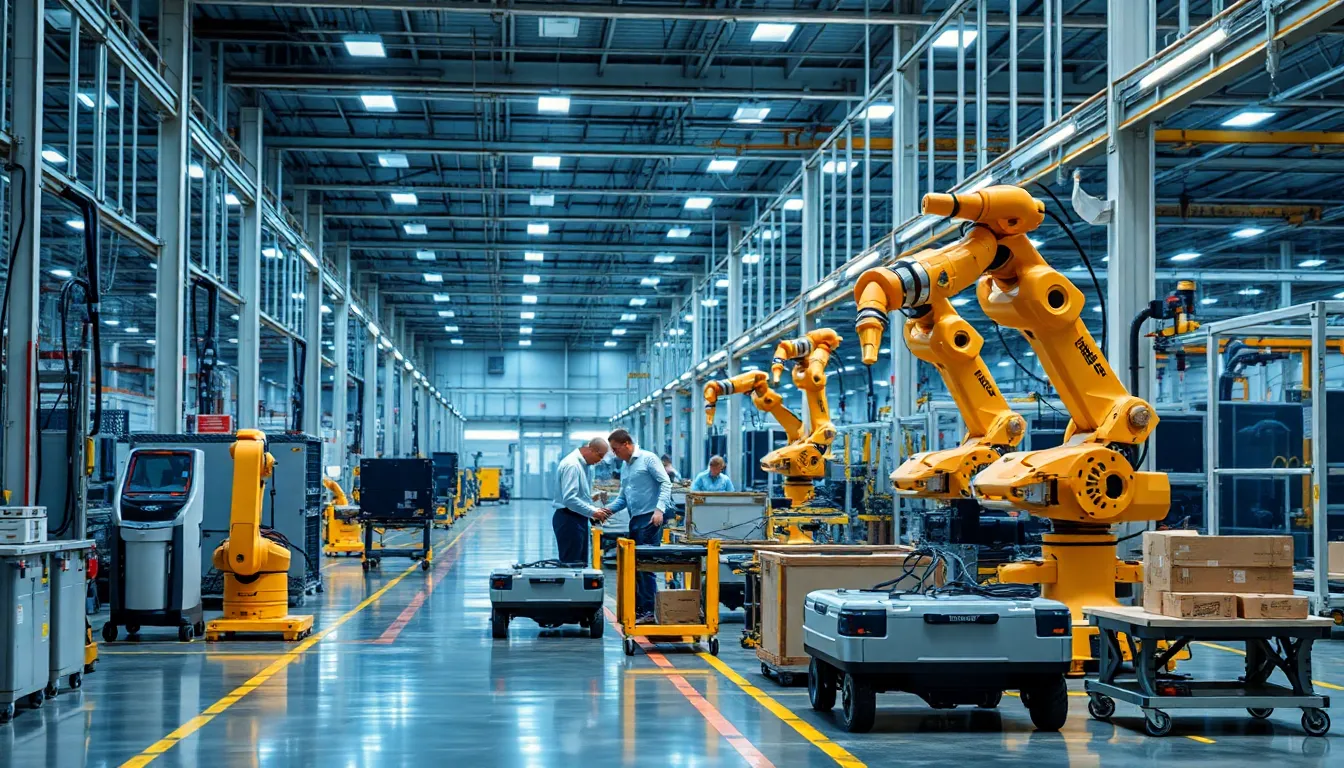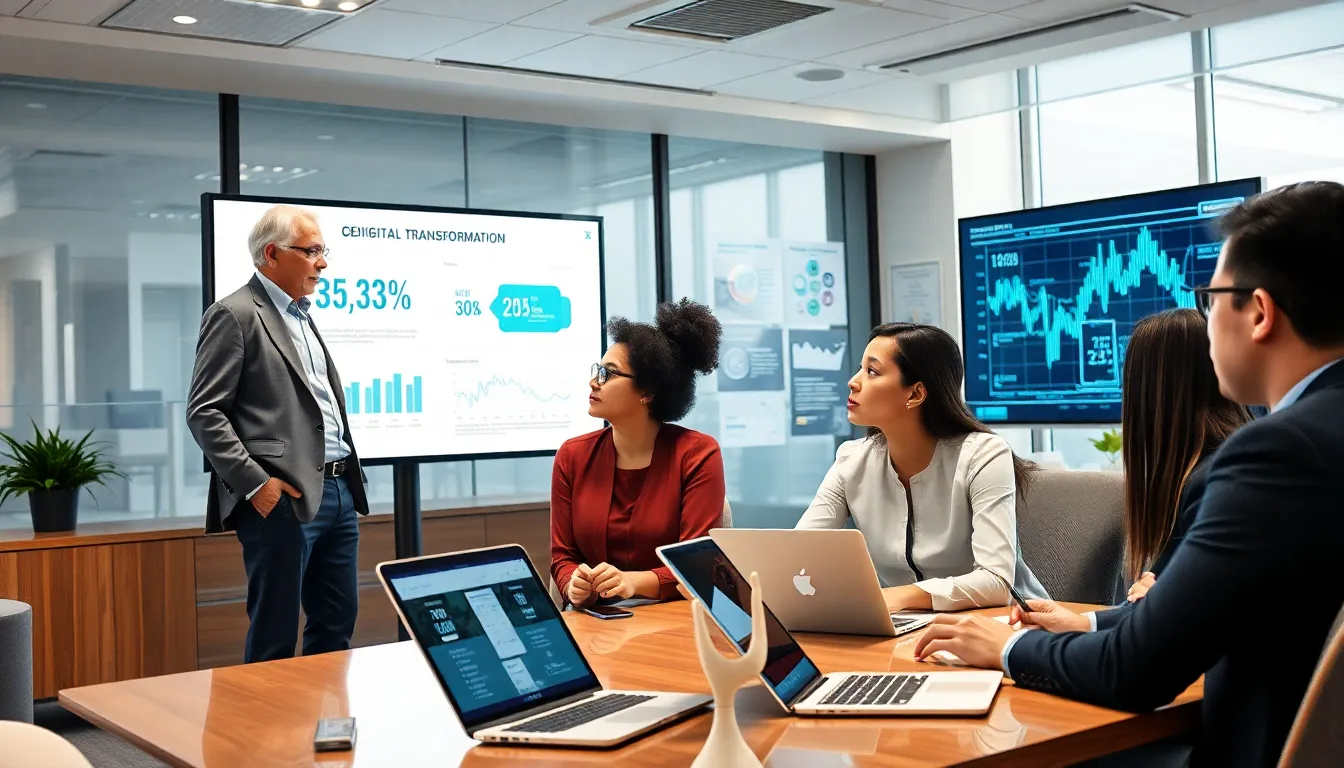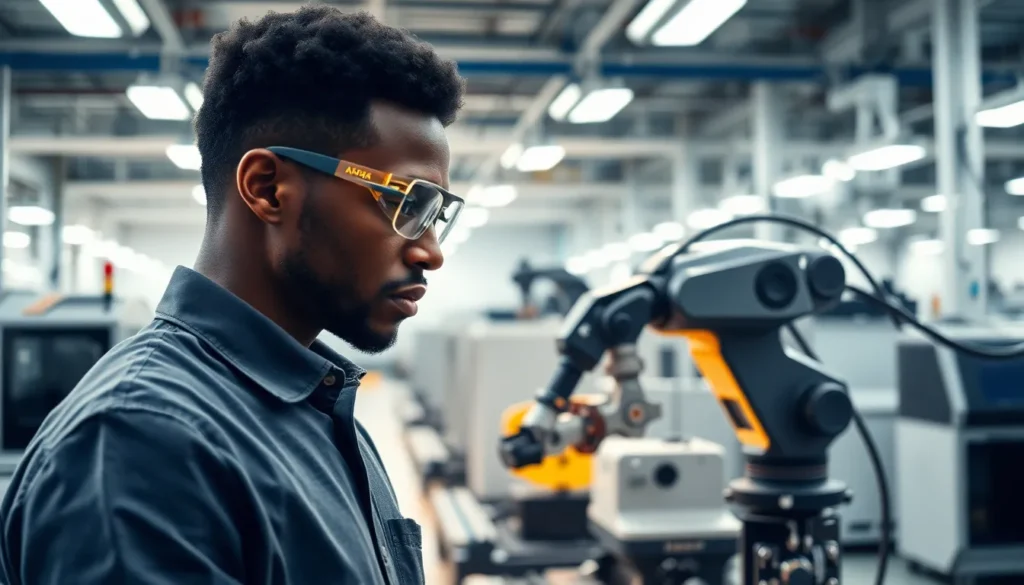Table of Contents
ToggleIn today’s fast-paced world, manufacturing technology is evolving at breakneck speed. From automation to artificial intelligence, these advancements are reshaping how products are made and delivered. Staying updated on these trends is crucial for manufacturers aiming to maintain a competitive edge in the industry.
Innovations in manufacturing technology not only enhance efficiency but also improve product quality and reduce waste. As companies adopt new tools and techniques, they’re discovering new ways to streamline operations and boost profitability. This article dives into the latest updates in manufacturing technology, exploring the tools and trends that are revolutionizing the sector. Whether you’re a seasoned professional or just starting out, understanding these changes can help navigate the future of manufacturing.
Overview of Manufacturing Technology
Manufacturing technology encompasses various processes and tools utilized in the production of goods. Key advancements include automation, robotics, and artificial intelligence. These technologies streamline operations, enhance productivity, and improve product quality.
- Automation: Automation allows manufacturers to increase efficiency by minimizing human intervention in repetitive tasks. Machines perform tasks like assembly, welding, and painting with consistent accuracy. This shift reduces labor costs and increases production speed.
- Robotics: Robotics integrates machines capable of performing complex tasks. Robotic arms handle materials and components with precision in assembly lines. This enhances safety by reducing human exposure to hazardous environments.
- Artificial Intelligence: AI optimizes manufacturing processes through data analysis and predictive maintenance. It identifies patterns and anomalies in production, enabling timely interventions that prevent downtime. AI boosts decision-making and resource allocation.
- Additive Manufacturing: Additive manufacturing, or 3D printing, creates products layer by layer. This method reduces material waste and allows for rapid prototyping. It enables customization and faster turnaround times for product development.
- Internet of Things (IoT): IoT connects machinery and devices to the internet, facilitating real-time data exchange. This connectivity allows manufacturers to monitor equipment performance and optimize supply chains. IoT contributes to enhanced productivity and smarter decision-making.
- Sustainable Practices: Modern manufacturing technologies emphasize sustainability. Techniques such as energy-efficient machines and waste-reduction strategies lower the environmental impact. Embracing these practices aligns with growing consumer demands for eco-friendly products.
These technological advancements not only transform production techniques but also redefine industry standards and expectations, providing significant competitive advantages for those who adapt.
Recent Innovations in Manufacturing

Recent advancements in manufacturing technology continue to reshape the industry landscape. Key innovations include advanced robotics and the application of artificial intelligence (AI) and machine learning.
Advanced Robotics
Advanced robotics plays a crucial role in modern manufacturing. These systems enhance operational efficiency through:
- Collaborative Robots (Cobots): Cobots work alongside human workers, promoting safety and productivity. They assist in tasks like material handling and assembly.
- Automated Guided Vehicles (AGVs): AGVs transport materials within facilities, optimizing workflow and reducing labor costs.
- Vision Systems: Integrated vision systems enable robots to perform quality inspections. These systems detect defects in products, ensuring only high-quality items proceed through production.
These robotic solutions improve accuracy and speed while minimizing human error.
AI and Machine Learning Applications
AI and machine learning significantly influence manufacturing processes. They provide insights that enhance decision-making through:
- Predictive Maintenance: Machine learning algorithms analyze equipment data to predict failures, reducing downtime and maintenance costs.
- Supply Chain Optimization: AI optimizes inventory levels by predicting demand fluctuations, thus lowering excess stock and enhancing order fulfillment rates.
- Process Automation: AI streamlines workflows by automating routine tasks, freeing up human resources for higher-value activities.
Integrating AI results in smarter manufacturing, fostering innovation and efficiency across operations.
Emerging Trends in Manufacturing Technology
Emerging trends in manufacturing technology continue to reshape the industry landscape, driving improvements in efficiency, safety, and sustainability. Key areas of focus include additive manufacturing and sustainable manufacturing practices.
Additive Manufacturing
Additive manufacturing, commonly known as 3D printing, revolutionizes production by enabling the creation of complex geometries with minimal waste. It allows for rapid prototyping, reducing lead times and costs for product development. Industries such as aerospace and healthcare leverage additive manufacturing for customized components, enhancing functionality and performance. The integration of advanced materials, like metals and polymers, expands applications, promoting lightweight designs. Moreover, the scalability of additive manufacturing provides manufacturers with flexibility in production, accommodating small batch runs without significant retooling expenses.
Sustainable Manufacturing Practices
Sustainable manufacturing practices increasingly gain traction in response to consumer demand for eco-friendly solutions. Manufacturers implement strategies to reduce energy consumption and minimize environmental impact. Energy-efficient machinery and renewable energy sources contribute to decreased carbon footprints. Waste reduction initiatives, including recycling and upcycling materials, enhance resource efficiency. Embracing circular economy principles, companies aim to design products for longevity and reuse. Additionally, transparent supply chain practices, such as sourcing materials responsibly, align with consumer values and promote corporate responsibility. These efforts not only satisfy market expectations but also fortify brand loyalty among environmentally conscious customers.
Challenges in Adopting New Technologies
Manufacturers encounter several challenges while adopting new technologies. Resistance to change often arises from a workforce accustomed to established processes. Employees may hesitate to embrace unfamiliar systems, impacting productivity and morale.
Financial constraints present another significant hurdle. Implementing advanced manufacturing technologies typically involves substantial upfront investment, including costs for equipment, software, and training. Smaller manufacturers may struggle to allocate sufficient budgets for such transitions, hindering their competitive edge.
Integration issues complicate the technological adoption process. New systems must seamlessly connect with existing infrastructure to maximize efficiency. Delays and disruptions can occur if compatibility problems arise, resulting in operational setbacks.
Skill gaps within the workforce can delay the adoption process. Advanced technologies necessitate specialized knowledge, and manufacturers may find it challenging to recruit or train personnel proficient in new tools and systems. This lack of expertise often leads to underutilization of new technology.
Safety concerns are paramount when integrating advanced technologies. Manufacturers must ensure that robotic systems and AI applications adhere to strict safety protocols to protect employees. Implementing these safety measures can prolong the adoption timeline.
Regulatory compliance adds another layer of complexity. Manufacturers must navigate industry-specific regulations and standards when deploying new technologies. Ensuring compliance often requires additional resources and time, complicating the adoption process.
Market fluctuations and economic uncertainty can deter investment in new technologies. Manufacturers may hesitate to adopt new systems during volatile periods, opting to maintain the status quo. This cautious approach can limit growth potential and innovation.
Overall, overcoming these challenges necessitates strategic planning, clear communication, and ongoing support from leadership to successfully adopt new technologies in manufacturing.
Future of Manufacturing Technology
Manufacturing technology continues to evolve, driven by innovations that enhance efficiency, sustainability, and responsiveness. Key areas shaping the future include the integration of artificial intelligence, advancements in robotics, and the expansion of smart manufacturing systems.
- Artificial Intelligence: AI systems predict trends by analyzing vast data sets. These systems streamline operations, improve quality control, and support predictive maintenance efforts. Manufacturers leveraging AI can respond rapidly to market demands.
- Robotics: Advanced robotics, including collaborative robots (cobots), will dominate manufacturing floors. Cobots enhance human-robot collaboration, improving safety and efficiency. Moreover, automated guided vehicles (AGVs) optimize material handling, reducing labor costs and increasing accuracy.
- Smart Manufacturing: The Internet of Things (IoT) connects machines for real-time monitoring and control. Factories can gather valuable insights from interconnected devices, facilitating proactive maintenance and decreasing downtime. As IoT adoption grows, manufacturers enhance supply chain efficiency and transparency.
- Additive Manufacturing: The future sees an accelerated embrace of additive manufacturing. 3D printing permits on-demand production, reducing inventory costs and enabling custom designs. Its application in industries like healthcare and aerospace will expand, driving innovation.
- Sustainability Initiatives: Manufacturers increasingly adopt sustainable practices in response to consumer preferences. Energy-efficient technologies and waste reduction strategies become standard. Adopting circular economy principles promotes resource sustainability, appealing to environmentally aware customers.
Facing adoption challenges remains essential for manufacturers. Embracing these changes requires workforce training, investment in new technologies, and management support. Strategic planning and communication facilitate smoother transitions and ensure organizations stay competitive in this dynamic landscape.
Manufacturing technology is on a transformative journey that’s reshaping how products are made and delivered. As automation and AI become integral to operations manufacturers must adapt to stay ahead. Embracing innovations like additive manufacturing and sustainable practices not only boosts efficiency but also meets the rising demand for eco-friendly solutions.
The future promises even more advancements in robotics and smart manufacturing systems. These developments will enhance productivity and safety while addressing challenges in workforce training and technology integration. Staying informed and agile will be crucial for manufacturers looking to thrive in this evolving landscape. By investing in the latest technologies and fostering a culture of adaptability they can secure their competitive edge in the market.







